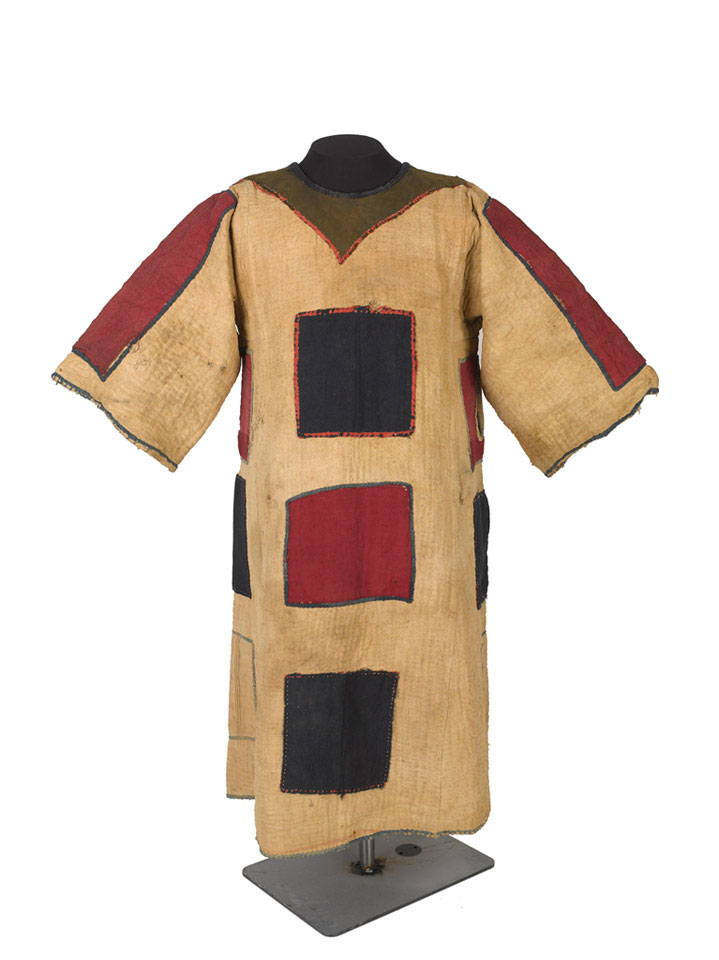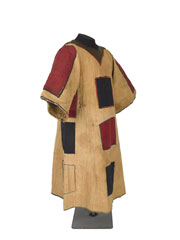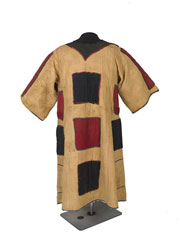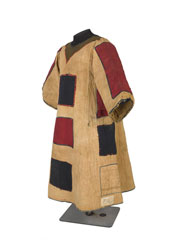
Online Collection
Jibbah, Emir Wad El Nejumi, Sudan, 1889 (c)
One of two cloth jibbahs associated with Abdel Rahman Wad El Nejumi and his son.
The jibbah was worn by many of the Sudanese soldiers fighting under the banner of the Mahdi and his successors. The colourful patches were initially added to simple designs of civilian smock by the Mahdist Ansar (helpers) as symbolic representations of poverty and virtue. As the manufacture of these garments became more organised to meet demand, so more uniformity was introduced, with the square or rectangular patches on later Ansar jibbehs followed broadly symmetrical designs. Despite their symbolism, the Mahdist garments could vary greatly in quality and those that have survived, as either souvenirs or trophies, tend to be of superior manufacture.
The jibbah would have usually been worn with cotton trousers and a turban or skull cap.
Wad El Nejumi was a religious ascetic from Sudan and a devoted follower of the Mahdi who led a rebellion against Egyptian occupation in the 1880s. Emir Wad El Nejumi led Sudanese/Dervish forces that destroyed Colonel William Hicks Pasha's Egyptian forces in 1883 and which defeated and killed General Charles Gordon at Khartoum in 1885. Under the rule of the Khalifa Abdullah Taashi Wad El Nejumi led an invasion of Egypt in 1889. The expedition was a failure and Wad El Nejumi was killed at the Battle of Toski, on 3 August 1889.
NAM Accession Number
NAM. 1960-08-101-2
Copyright/Ownership
National Army Museum Copyright
Location
National Army Museum, Study collection
Object URL
https://collection.nam.ac.uk/detail.php?acc=1960-08-101-2






